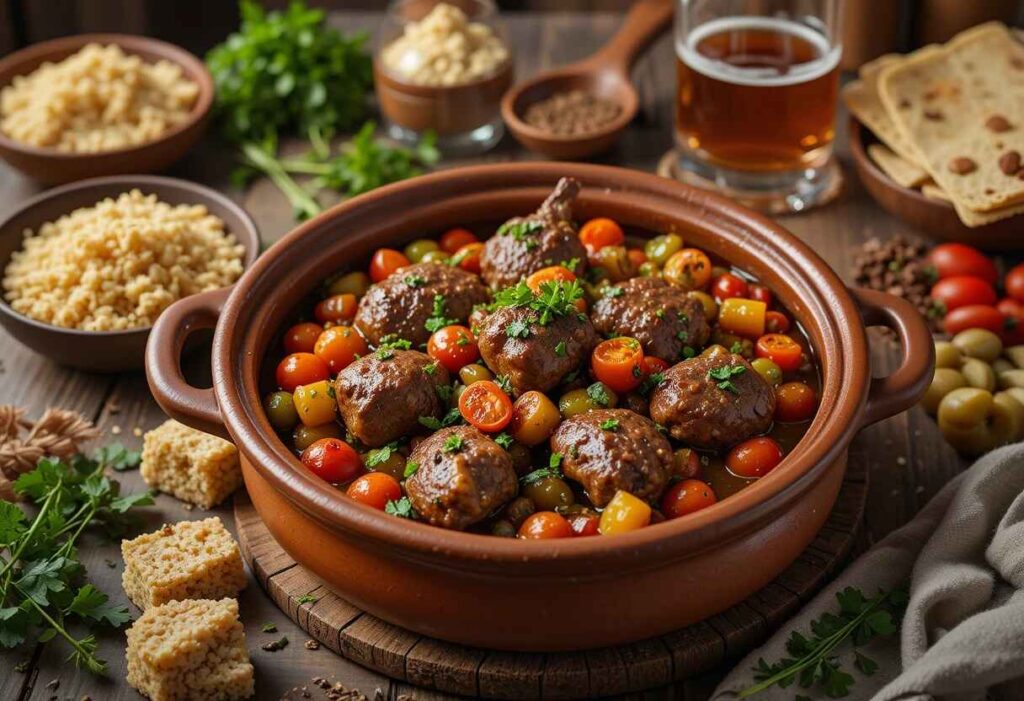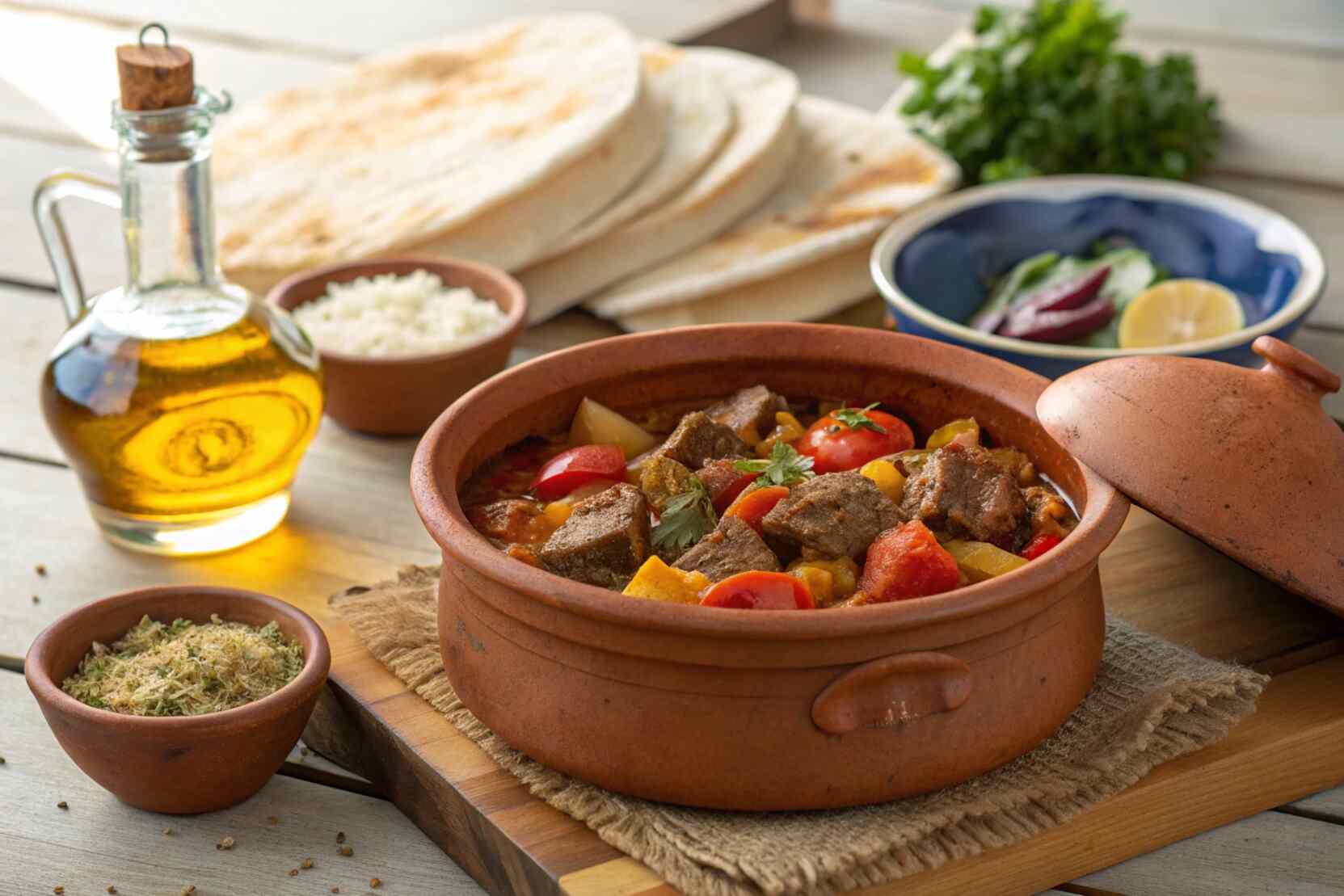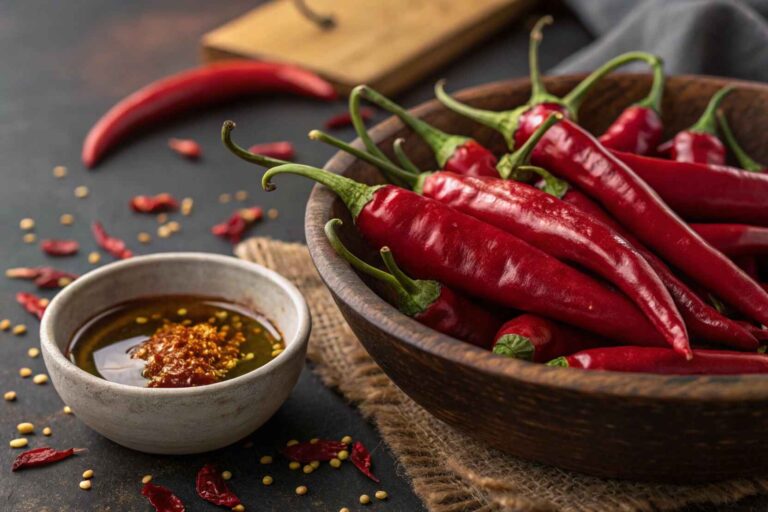Cevurı is a cherished dish that embodies the culinary spirit of Turkey, blending centuries of tradition with evolving local flavors. Its origins are deeply rooted in Anatolian culture, where seasonal vegetables, spiced meats, and aromatic herbs were slow-cooked over open flames. Over time, cevurı has grown beyond its rustic roots to become a centerpiece in Turkish households and modern restaurants.
This dish stands out not just for its rich, layered flavor but also for its nutritional value and versatility. Whether enjoyed with tender lamb or reimagined with roasted vegetables, cevurı remains a vibrant expression of Turkish gastronomy.
What is Cevurı?

Cevurı is a savory Turkish dish typically made with marinated meat, slow-cooked vegetables, olive oil, and regional spices. It can be served as a stew or skillet-style preparation, and its presentation and ingredients often change based on geography and seasonal availability.
While lamb is the most common base, beef, seafood, or plant-based proteins are also popular in modern interpretations. The dish is celebrated for its balance of flavor, texture, and aroma, often using fresh herbs, garlic, onion, and spices like paprika or cumin to build complexity.
History and Cultural Importance:
Cevurı holds a respected place in Turkey’s culinary history. Originating in rural Anatolia, it was developed by nomadic tribes who cooked with simple ingredients using minimal tools. These early versions emphasized the importance of flavor preservation, using spice blends and slow cooking to enhance both taste and nutrition.
As the Ottoman Empire expanded, cevurı evolved—absorbing influence from the Mediterranean, Central Asia, and the Balkans. It became a festive meal, commonly served during weddings, holidays, and large family gatherings. Today, it’s appreciated not just for its taste but for the emotional connection and heritage it represents.
What Are the Different Types of Cevurı?
- Anatolian Cevurı: This classic version features lamb, onions, and tomatoes simmered in olive oil with cumin and sumac, offering deep, earthy flavors tied to traditional rural Turkish cooking.
- Coastal Cevurı: A fresh seafood variant using fish or shrimp, accented with lemon juice, herbs, and sometimes white wine, making it light, zesty, and ideal for coastal regions.
- Vegetarian Cevurı: Made with eggplant, zucchini, chickpeas, and tomato sauce, this plant-based version is both hearty and healthy, finished with parsley or mint for a refreshing touch.
- Istanbul Fusion Cevurı: A modern, urban version that uses beef, bell peppers, garlic, and a yogurt base, reflecting the culinary creativity found in Turkey’s bustling metropolitan kitchens.
- Spicy Eastern Cevurı: Known for its bold flavor, this variation includes hot chili flakes and paprika, often served with bread or bulgur to balance its intensity and heat.
What Are the Key Ingredients in Cevurı?
Here’s a quick comparison between traditional and modern takes on cevurı, showing how ingredients evolve while keeping the dish flavorful and authentic:
| Ingredient | Traditional Cevurı | Modern Adaptation |
| Meat/Protein | Lamb or beef | Chicken, seafood, or tofu |
| Vegetables | Onion, tomato, pepper | Zucchini, eggplant, spinach |
| Fat Source | Olive oil | Olive oil or ghee |
| Herbs & Spices | Cumin, sumac, parsley | Paprika, mint, lemon zest |
| Optional Enhancers | Walnuts, yogurt | Feta, tahini, balsamic vinegar |
What Makes Cevurı a Standout Dish?
Flavor Depth:
Cevurı offers a complex flavor profile created through slow cooking and thoughtful seasoning. Herbs like cumin and paprika enhance each bite, while vegetables and meats contribute rich, savory layers. This combination results in a deeply satisfying taste that keeps people coming back to experience the unique fusion of texture, spice, and aroma.
Cultural Relevance:
Rooted in Turkish culinary history, cevurı is more than food—it’s tradition on a plate. Families often prepare it for holidays and gatherings, passing down techniques through generations. Each variation tells a story of regional influence, community bonding, and cultural pride, making cevurı a symbol of both heritage and hospitality in Turkish cuisine.
Ingredient Flexibility:
One of cevurı’s greatest strengths is its adaptability. Whether made with lamb, beef, seafood, or vegetables, it suits a variety of dietary preferences. Vegan and low-fat versions preserve the dish’s core identity while meeting modern health goals. This flexibility allows everyone to enjoy cevurı without compromising flavor or authenticity.
Presentation Variety:
Cevurı shines whether served in a clay pot, layered on flatbread, or plated for fine dining. Its versatility allows it to match any dining setting, from rustic countryside homes to urban restaurants. The dish’s vibrant colors and textures also make it visually appealing, enhancing the overall culinary experience with aesthetic charm.
Balanced Nutrition:
Cevurı delivers well-rounded nutrition with protein from meat or legumes, fiber from vegetables, and healthy fats from olive oil or nuts. Low in processed ingredients and rich in vitamins, it supports energy and wellness. This balance makes it an ideal choice for those seeking hearty, wholesome meals with clean, natural ingredients.
How to Make Cevurı – Step-by-Step!
- Prepare the Vegetables: Start by heating olive oil in a deep pan. Sauté thinly sliced onions until they become translucent, then add diced bell peppers. Cook them together for about 5 minutes to build a soft, flavorful base that complements the spices and meat in later steps.
- Brown the Meat: Add 500g of seasoned lamb or beef to the pan. Stir frequently to ensure the meat is evenly browned on all sides. This step helps lock in the juices and enhances the savory flavor, which is essential to any good cevurı recipe.
- Simmer with Spices: Toss in chopped tomatoes along with paprika, cumin, salt, and black pepper. Stir everything well and reduce the heat. Let it simmer gently for 30–40 minutes, allowing the spices to infuse into the meat and vegetables, creating a rich, aromatic stew-like dish.
- Add Garnishes and Extras:Once the cooking is complete, remove the pan from heat. Garnish with fresh parsley for color and brightness. Optional toppings like crushed walnuts, crumbled feta, or a squeeze of lemon can be added for extra texture and flavor enhancement.
- Serve and Enjoy: Plate your cevurı hot and serve it alongside warm flatbread, bulgur pilaf, or rice. Its balanced mix of spices and ingredients makes it a hearty main course that’s both satisfying and nourishing—perfect for family meals or festive gatherings.
What Are the Health Benefits of Cevurı?
Cevurı is not just rich in taste—it also brings numerous health advantages. From essential nutrients to digestion-friendly ingredients, it supports various aspects of well-being.
Protein Boost:
Packed with high-quality protein from meats or legumes, cevurı aids in muscle repair, cell regeneration, and energy supply. It’s especially beneficial for active individuals and those following high-protein diets, helping to keep you full longer while supporting lean muscle development and a healthy metabolism.
Heart-Healthy Fats:
Thanks to olive oil and nuts, cevurı contains unsaturated fats that promote cardiovascular health. These ingredients help reduce LDL (bad cholesterol) levels and increase HDL (good cholesterol), offering anti-inflammatory benefits and lowering the risk of heart disease when consumed as part of a well-balanced diet.
Digestive Fiber:
Cevurı includes vegetables and legumes that are naturally rich in fiber. Dietary fiber supports smooth digestion, prevents constipation, and promotes a balanced gut microbiome. Regular fiber intake also helps regulate appetite, support metabolism, and improve nutrient absorption across the digestive system.
Low-Glycemic Load:
When prepared with whole foods like legumes and vegetables, cevurı has a low glycemic load. This helps manage blood sugar levels and reduce insulin spikes, making it suitable for people with diabetes or anyone aiming for stable energy and appetite control throughout the day.
Natural Antioxidants:
Cevurı contains antioxidant-rich spices like cumin and herbs such as parsley. These ingredients help fight oxidative stress, reduce inflammation, and boost immunity. They also play a role in protecting cells from damage, supporting long-term health and lowering the risk of chronic diseases.
What Are the Best Side Dishes to Pair with Cevurı?
To enhance your meal, pair cevurı with sides that balance and complement its flavors:
| Side Dish | Flavor Profile | Why It Works |
| Bulgur Pilaf | Nutty, slightly chewy | Adds texture contrast and absorbs sauces |
| Shepherd’s Salad (Çoban) | Crisp, tangy, refreshing | Cleanses the palate and lightens the dish |
| Ayran (Yogurt Drink) | Cool, creamy, slightly salty | Balances the spices with a cooling effect |
| Pickled Vegetables | Sour, crunchy | Provides acidity and crunch |
| Lavash Bread | Soft and stretchy | Perfect for scooping and serving |
Why Cevurı Continues to Win Over Food Lovers?
Cevurı stands out in a world of culinary choices not only for its flavor but for its deeper value. It’s a dish that feels hearty and soulful, providing both comfort and nourishment. Food enthusiasts often describe it as a “home-cooked hug”—a mix of heritage and flavor that speaks to a larger cultural story.
This adaptability and cultural identity make cevurı ideal for chefs experimenting in fusion kitchens, as well as families looking for a nutritious, easy-to-make meal. As international palates continue to evolve, dishes like cevurı are poised to gain even more global appreciation.
FAQs:
What makes cevurı different from other Turkish meat dishes?
Cevurı is unique due to its one-pot cooking method, blending meat, vegetables, and spices together. Unlike grilled kebabs, it creates deep flavor layers as everything simmers. This slow process gives cevurı a rich, unified taste that sets it apart from similar dishes.
Is cevurı suitable for meal prep or weekly planning?
Yes, cevurı is ideal for meal prep. It keeps well in the fridge for several days and reheats easily without losing flavor. Making a big batch helps save time while offering a healthy, homemade option for lunches or dinners throughout the week.
Can I customize cevurı with international flavors?
Absolutely. You can give cevurı a global twist by using ingredients like curry, ginger, or smoked paprika. Add grains like quinoa or different vegetables to suit your taste. This makes it versatile while keeping the core cooking method and comfort intact.
What’s the best protein alternative in vegetarian cevurı?
Chickpeas and lentils are great vegetarian protein choices for cevurı. They hold flavor well and offer a hearty texture. You can also try tofu or mushrooms to keep it filling, while still enjoying the dish’s signature blend of spices and vegetables.
Does cevurı work for low-carb or keto diets?
Yes, cevurı fits low-carb diets when made without grains or starchy vegetables. Use protein, healthy fats, and non-starchy vegetables like zucchini or spinach. Serve it with cauliflower rice or leafy greens to enjoy a keto-friendly version without losing flavor or texture.
Conclusion:
Cevurı is more than a traditional Turkish recipe—it’s a flavorful reflection of history, family, and evolving tastes. Its ability to adapt across diets, regions, and cultures makes it a timeless favorite that continues to win hearts around the world.
Whether you enjoy it rich with lamb or vibrant with vegetables, cevurı delivers a wholesome, comforting experience that nourishes both body and soul—reminding us that food, at its best, is a bridge between heritage and home. With every bite, it invites a deeper appreciation for tradition. Cevurı isn’t just eaten—it’s remembered, shared, and celebrated.
Relate post:












